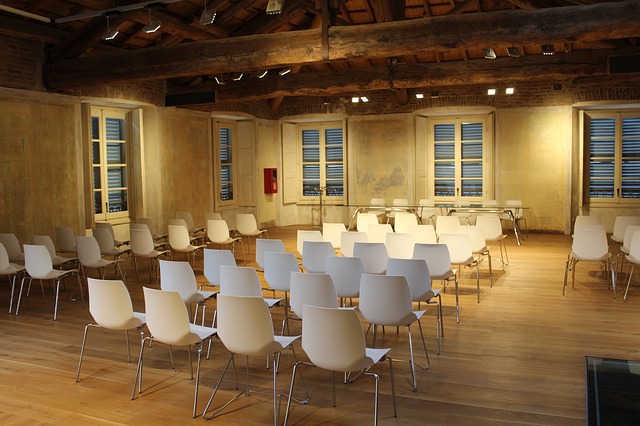Recently, I saw something very rare — several great presentations!
I was MCing a large event here in Perth. The audience was full of teachers and educators keen to learn more about how STEM subjects (Science, Technology, Engineering and Mathematics) are such a vital part of learning for tomorrow’s world.
Hosting events is something I do quite a lot and, I have to say, in general I see some fairly mediocre public speaking and presentation skills. This event was different. There were three outstanding presentations. So let me share with you some of the reasons why they made such a positive impression.
A good presentation is personal
First and foremost, each speaker spoke from the heart. There was a reason why they were there and there was a reason why they were so passionate about what they were talking about.
I know this sounds very basic but seriously, when it comes to great presentations this is fundamental. I never see enough real connection. Tell me some stories about what drove you down this path, what you have seen along the way, what wisdom you can share with your audience based on these observations. Paint some pictures for me — speak from the heart and allow your eyes to sparkle as a result. It shows you are alive. It shows you care. It tells me I should pay attention!
A good presentation uses signposting
Each of the presenters had a different time allocation. But what stood out for me was how each of them clearly set out their intention for their 10-, 30- and 45-minute presentations. They told us what their speech was all about, why they were sharing their wisdom and how that was going to look in their time on stage. I really like this because it gives us, the audience, a clear road map of what to expect. We know what’s in it for us. This brief description at the beginning can be enticing — almost like a chef showing you what he’s created for your dessert before you’ve even had your entrée.
A good presentation uses pictures
All three presentations provided great pictures. Some were pictures in my mind; others were pictures on the slides. Either way, the visual element was really important. The first two presenters talked without slides, yet their stories were so good it didn’t matter at all. Now that’s a presentation skill.
Too many people make the big mistake in hearing the word “presentation” to instantly reach for PowerPoint. On many occasions it’s simply unnecessary. Back yourself; recognise that you might have a story that is so good it doesn’t need anything else. As often is the case, I watch the audience. I want to know how a presentation is going down (apart from anything else, I teach presentation training workshops, so I’m always looking for examples of what works well). In these two instances the audience was totally attentive. There was no technology itch that required scratching. They were engaged, listening to every word, and painting their own pictures of what was being said.
In the final presentation we were treated to a visual feast. Beautifully constructed slides were clear, colourful, consistent and complimentary to the message being delivered.
Rarely do I see such harmony. Photographs were appropriate resolution, illustrations were legible regardless of where you sat, font was consistent, and graphics were simple and elegant. There might have been around 100 slides in total, but it ticked along beautifully. The slides were introduced seamlessly. Each had a point to make. Each had a purpose.
What’s my advice for using PowerPoint in a presentation? Ask yourself “so what?” Do I really need this slide? If I cut it, would my audience be missing out? Be honest and brutal. Your presentation will be better off for it.
A good presentation has a good pace
Adrenaline is both your friend and foe. It lifts you for the occasion, but it can so often have you running at breakneck speed and approaching a serious corner. You’re excited or nervous. Or perhaps you’re in a rush to get off stage. Whatever, there is a good chance that you are “travelling” at a speed that you are uncomfortable with.
All the presentations perfectly adhered to the “speed limit” — not too fast, not too slow. We could all follow the direction and most important of all we could absorb and digest the message.
If you sense you might be one of those who has their mouth engaged before their brain, take some deep breaths. Slow your mind down. Visualise where you want to go and take a moment. Do this every time and you’ll notice a huge difference.
A good presentation has purpose
Many would argue this is what it’s all about. I tend to think what makes a great presentation is a combination of all the above. At the end of the day you want your presentation to be remembered and your messages put into action.
On this particular day the messages were clear for all. They wanted us to be inspired to make a change. They hoped that the evidence they presented was sufficient for that action to take place. This is what you want. So, ask yourself, have you presented your case? Have you shown the audience the evidence, have you touched a nerve and have you made it clear what they should do next?
So often something as fundamental as this is missing.
Be very clear. Before doing anything, think about your purpose. Why am I doing this; what do I want the audience to do with my presentation; how can I make a difference?
Presentation and public speaking skills are something that need regular fine-tuning and plenty of practice. Like everything, the more you do, the better you get. It’s not something you should be able to do without some learning along the way. It’s a skill, and with the right direction and tutoring, you too can become a presenter who leaves that lasting impression.
Ask about Lush – The Content Agency’s presentation skills workshop. Get in touch here.
Like what you’ve read? Sign up to the Lush newsletter for advice to help you market your business better, tips from our video production gurus, and a podcast or two from our favourite podcasting team, Brand Newsroom. In the meantime, you might enjoy these:

